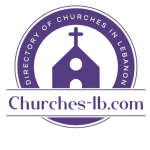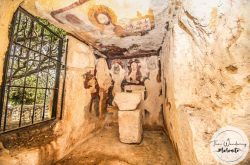Overview
Map
Other Details
كنيسة مار شليطا
Aandqet
Akkar
Akkar
كنيسة مار شليطا - عندقتالدّير الأوّل الذي بُني في الموضع يعود لأواخر القرون الوسطى. أمّا الكنيسة فتعود للقرن السابع عشر، تجدّدت عدّة مرّات وكان آخرها سنة ١٩٠٥ حين أخذت شكلها الحاليّ. الكنيسة مبنيّة بالحجر البازالتيّ الأسود، وهي عقد مُصالب ينتهي بحنية. تحوي الكنيسة لوحةً لمار شلّيطا من عمل الفنّان هارمانديان، تعود لسنة ١٩٣٥.The church of St Chalita (Artemius) - Aandqet The first monastery built on the spot dates back to the low middle ages. The church was built in the XVIIth century and was restored many times. The current shape dates back to 1905. The structure is a crossed vault single nave that ends with an apse, built with black basalt stone. The church holds a painting of St Chalita (Artemius) made by Harmandian in 193
Visited 2490 times, 5 Visits today




















Reviews are disabled, but trackbacks and pingbacks are open.